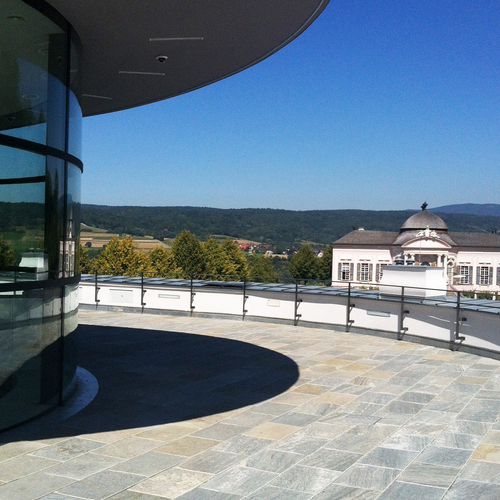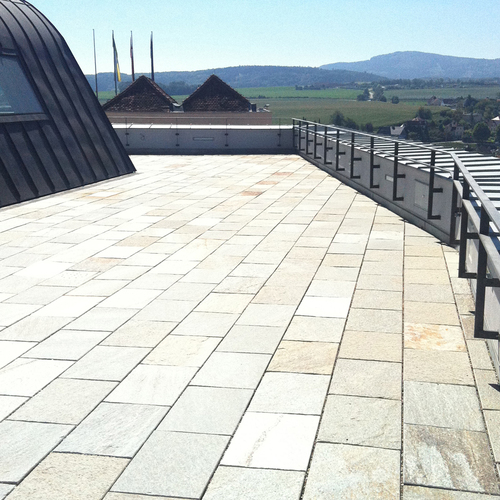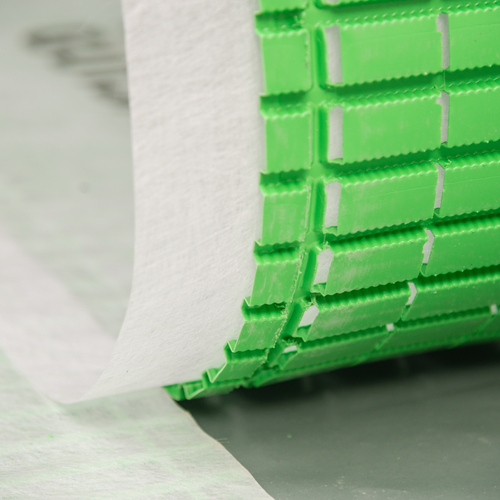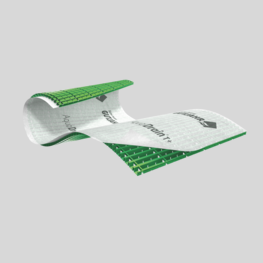Security is not a question of belief: surface drainage protects Benedictine Abbey of Melk
The Benedictine Abbey of Melk sits high up on a rocky outcrop, where it is visible from afar. The landmark of the Wachau (Lower Austria) is a masterpiece of baroque architecture and a UNESCO World Heritage Site. Since June 2011 it has had another attraction: The 350 square metre viewing terrace on the roof of the north bastion provides visitors with a wonderful view over the Alpine foothills and the abbey complex, including the garden pavilion and monastery park.
Melk Abbey was founded on the right-hand bank of the Danube in the 11th century, and had its heyday during the baroque period. The goal of Abbot Berthold Dietmayr, who was only 30 years old at the time, was to emphasize the religious, political and spiritual importance of the monastery with a new building. For this he hired well-known master builder Jakob Prandtauer, who created an overall baroque plan which he started to implement in 1702. The result was the biggest monastery complex of the Austrian Baroque – and by far the most famous. The character Adson von Melk from Umberto Eco's novel “The Name of the Rose” also contributed to this.
Renovation with fingertip feeling
During the renovation of the north bastion, the historical structure was almost completely retained. But the function and structure of the premises changed. The team from Wehdorn Architects turned the former “bulwark”, which blocked access to the baroque abbey park, into a link. The heart of the building is now a central room which is flooded with light with a glazed roof structure, via which visitors can access the roof terrace. A flight of stairs leads directly into the park from the terrace.
The demand for quality and energy efficiency was high during the renovation. The client therefore chose a sturdy and high-quality natural stone for the terrace covering: Luserna gneiss from Piedmont, Italy in The stone has a lamellar structure and is therefore resistant even when it is relatively thin. The Ehrlich company from Scheibbs laid the natural stone onto the roof terrace.
Natural stone protects
A completely water-permeable construction was created without having to add a lot of weight using AquaDrain T + surface drainage - an ideal solution
The problem: Due to the thermal insulation of up to 40 cm, loose laying in a bed of chippings was the only sensible solution. Because the construction height for a permanently laid construction with drainage mortar simply wasn't there. Floor drains also had to be installed every 5 to 6 meters – the creation of the required surface fall would not have been possible with a construction with mortar. In order to give the natural stone permanent protection from damage, Richard Ehrlich therefore recommended that the client install it on AquaDrain T + surface drainage from Gutjahr. The result was a completely water-permeable construction without having to add a great deal of additional weight.
Well thought-out system protects natural stone
Even expensive natural stone is often simply laid on gravel or chippings. But that can quickly become a problem. Gravel and chippings are not anti-capillary, as a study by the MPA Wiesbaden shows. If there is water on the waterproofing at the overlap of the membrane joints, for example, it migrates back upwards via the construction, resulting in unsightly moisture stains and weeds in the joints. Gutjahr has therefore developed the AquaDrain T + surface drainage especially for the loose laying of natural and artificial stone. The system is capillary passive and ensures fast and permanent drainage of the covering structure.
How AquaDrain T + works: The drainage system supports 100 % of the floor covering. This creates a cavity of 90% which can be drained – seepage water can drain off quickly and effectively. This has also been shown by an examination by the tBU Greven. In comparison with all of the most popular drainage mats for balconies and terraces, the Gutjahr system has the best drainage values, and moisture stains and frost damage are effectively prevented, as is the growth of weeds in the joints, which usually occurs with loose installation.
The system also acts as a protective layer and filter layer. The large contact area of 66% avoids high point loads. An additional protective layer is therefore not required on the waterproofing. A special geotextile fleece with low flow resistance is also laminated onto the plastic film as a kind of filter, which prevents fouling on the waterproofing.
350 square metres of the best views
Installer Richard Ehrlich and his team first rolled a PE film onto the roof terrace of Melk Abbey as a separating layer, and then the 16 mm thick AquaDrain T + drainage mats – a total of around 350 square meters. This was followed by a layer of chippings. The Luserna gneiss was laid loosely in the bed of chippings and the joints were grouted with chippings. And the result is impressive: the roof terrace shows how the historical structure and modern technology complement each other perfectly. The roof terrace also has special significance for Father Martin Rotheneder, the tourism manager at Melk Abbey: "Today everyone is invited to go up to the viewing platform and broaden their horizons, but not just enjoy the beautiful buildings and the surroundings, but also take a look towards a peaceful future. "
About Melk Abbey
Melk Abbey is a Benedictine Abbey near Melk (Lower Austria). As a symbol of the Wachau, it is a UNESCO World Heritage Site. The Wachau and Melk Abbey were also voted “Best Historic Destination in the World” by the National Geographic Traveller Magazine in 2008. Melk has been the spiritual and cultural centre of Lower Austria since the 11th century. Most of the baroque building that still exists today dates from the beginning of the 18th century. As well as the roof terrace with the fantastic view of the monastery and the surrounding area, the highlights are the marble hall and the library with about 100,000 books, plus the collegiate church and the abbey park. As well as the Benedictine monastery, Melk Abbey also accommodates the grammar school, which is Austria's oldest school.
Products used
Similar project reports
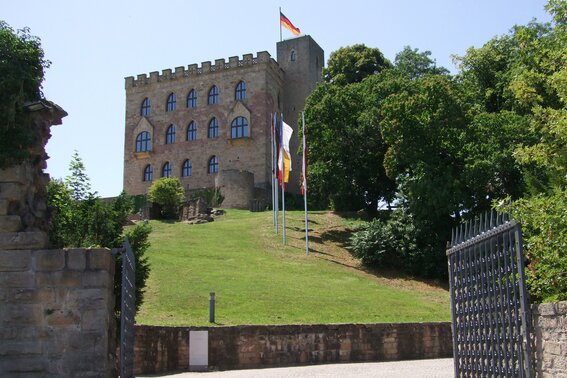
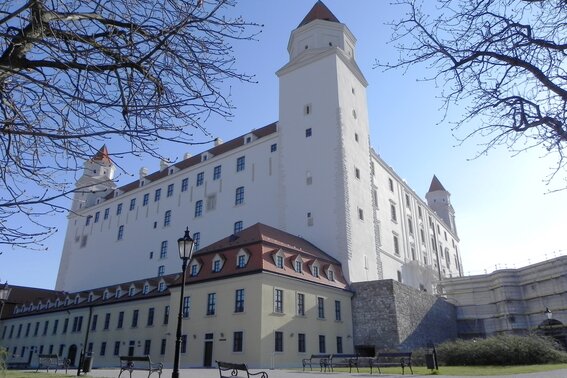
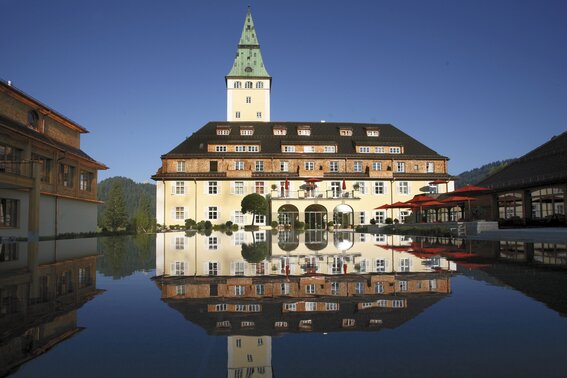
![[TRL] Gutjahr Systemtechnik GmbH - Komplettsysteme für den Außen- und Innenbereich](/build/images/gutjahr-logo.d62773db.svg)

